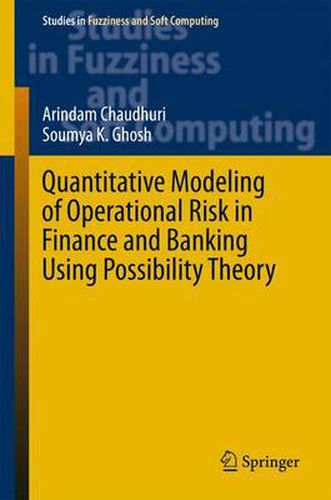Readings Newsletter
Become a Readings Member to make your shopping experience even easier.
Sign in or sign up for free!
You’re not far away from qualifying for FREE standard shipping within Australia
You’ve qualified for FREE standard shipping within Australia
The cart is loading…






This title is printed to order. This book may have been self-published. If so, we cannot guarantee the quality of the content. In the main most books will have gone through the editing process however some may not. We therefore suggest that you be aware of this before ordering this book. If in doubt check either the author or publisher’s details as we are unable to accept any returns unless they are faulty. Please contact us if you have any questions.
This book offers a comprehensive guide to the modelling of operational risk using possibility theory. It provides a set of methods for measuring operational risks under a certain degree of vagueness and impreciseness, as encountered in real-life data. It shows how possibility theory and indeterminate uncertainty-encompassing degrees of belief can be applied in analysing the risk function, and describes the parametric g-and-h distribution associated with extreme value theory as an interesting candidate in this regard. The book offers a complete assessment of fuzzy methods for determining both value at risk (VaR) and subjective value at risk (SVaR), together with a stability estimation of VaR and SVaR. Based on the simulation studies and case studies reported on here, the possibilistic quantification of risk performs consistently better than the probabilistic model. Risk is evaluated by integrating two fuzzy techniques: the fuzzy analytic hierarchy process and the fuzzy extension of techniques for order preference by similarity to the ideal solution. Because of its specialized content, it is primarily intended for postgraduates and researchers with a basic knowledge of algebra and calculus, and can be used as reference guide for research-level courses on fuzzy sets, possibility theory and mathematical finance. The book also offers a useful source of information for banking and finance professionals investigating different risk-related aspects.
$9.00 standard shipping within Australia
FREE standard shipping within Australia for orders over $100.00
Express & International shipping calculated at checkout
This title is printed to order. This book may have been self-published. If so, we cannot guarantee the quality of the content. In the main most books will have gone through the editing process however some may not. We therefore suggest that you be aware of this before ordering this book. If in doubt check either the author or publisher’s details as we are unable to accept any returns unless they are faulty. Please contact us if you have any questions.
This book offers a comprehensive guide to the modelling of operational risk using possibility theory. It provides a set of methods for measuring operational risks under a certain degree of vagueness and impreciseness, as encountered in real-life data. It shows how possibility theory and indeterminate uncertainty-encompassing degrees of belief can be applied in analysing the risk function, and describes the parametric g-and-h distribution associated with extreme value theory as an interesting candidate in this regard. The book offers a complete assessment of fuzzy methods for determining both value at risk (VaR) and subjective value at risk (SVaR), together with a stability estimation of VaR and SVaR. Based on the simulation studies and case studies reported on here, the possibilistic quantification of risk performs consistently better than the probabilistic model. Risk is evaluated by integrating two fuzzy techniques: the fuzzy analytic hierarchy process and the fuzzy extension of techniques for order preference by similarity to the ideal solution. Because of its specialized content, it is primarily intended for postgraduates and researchers with a basic knowledge of algebra and calculus, and can be used as reference guide for research-level courses on fuzzy sets, possibility theory and mathematical finance. The book also offers a useful source of information for banking and finance professionals investigating different risk-related aspects.